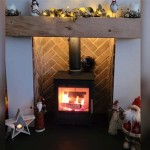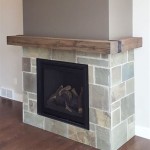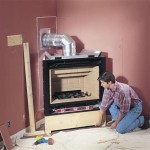Baby Proofing a Brick Fireplace Hearth
A fireplace, particularly one with a brick hearth, is a common feature in many homes. While fireplaces provide warmth and aesthetic appeal, brick hearths present a potential hazard for young children. The hard, sharp edges and protruding surface of a hearth can cause serious injuries if a child falls or bumps into it. Therefore, baby proofing a brick fireplace hearth is crucial to ensure a safe environment for infants and toddlers.
Effective baby proofing involves carefully assessing the risks posed by the hearth and implementing appropriate safety measures. These measures should aim to soften the impact of potential falls, prevent access to the fireplace and its elements, and generally minimize the likelihood of injury. The specific strategies employed will vary depending on the size and design of the hearth, as well as the age and developmental stage of the child.
Hearth Padding and Edge Protection
One of the most direct methods of baby proofing a brick fireplace hearth is to install padding or edge protection. This involves covering the hard surfaces of the hearth with a soft, impact-absorbing material. Several products are available specifically for this purpose, including foam padding, corner guards, and edge cushions. These are typically made from materials like high-density foam or rubber and are designed to adhere securely to the brick surface.
The choice of padding will depend on the size and shape of the hearth. For hearths with sharp corners, corner guards are essential to prevent injuries from bumps or falls. Edge cushions can be used to cover the straight edges of the hearth, providing a softer surface to come into contact with. It is important to select padding that is thick enough to provide adequate protection and that is securely attached to the brick. Some padding options use adhesive backing, while others require additional fasteners for secure installation. Consider the durability of the adhesive, its resistance to being pulled off by a child, and its potential to damage the brick surface upon removal.
When installing padding, ensure that all exposed edges and corners are adequately covered. Pay particular attention to areas where the hearth protrudes significantly into the room, as these are more likely to be encountered by a child. Regularly inspect the padding for wear and tear and replace it as needed. The longevity of the padding depends on the material used, the frequency of use by the child, and the environmental conditions within the room.
Creating a Barrier Around the Fireplace
Another effective strategy is to create a physical barrier around the fireplace, preventing the child from accessing the hearth altogether. This can be achieved using a variety of methods, including installing a safety gate or constructing a custom barrier. A safety gate designed for fireplaces is typically adjustable and can be configured to surround the entire hearth area. These gates are usually made of metal or durable plastic and feature a secure locking mechanism that prevents children from opening them.
When selecting a safety gate, ensure that it is tall enough to prevent the child from climbing over it and that the spacing between the bars is narrow enough to prevent the child from squeezing through. The gate should also be securely anchored to the surrounding walls or floor to prevent it from being pushed over. Consider the ease of use for adults when choosing a gate, as it will need to be opened and closed frequently to access the fireplace for cleaning or maintenance.
Alternatively, a custom barrier can be constructed from materials such as wood or Plexiglas. This option allows for a more tailored solution that can be adapted to the specific dimensions and design of the fireplace. However, custom barriers require more time and effort to build and install. It is crucial to ensure that the barrier is sturdy and secure and that it does not present any additional hazards, such as sharp edges or pinch points.
Fireplace Safety Accessories and General Precautions
Beyond padding and barriers, several other accessories and precautions can enhance the safety of a fireplace with a brick hearth. Fireplace screens are essential for preventing sparks and embers from escaping the fireplace and causing burns or fires. A sturdy fireplace screen should be placed in front of the fireplace opening whenever a fire is burning. Ensure that the screen is securely positioned and that the mesh is fine enough to contain even small embers.
Consider the placement of furniture around the fireplace. Keep furniture, especially items that a child might climb on, away from the hearth. This prevents the child from using thefurniture to access the hearth or fireplace. Also, store fireplace tools, such as pokers and tongs, out of reach of children. These tools can be sharp and dangerous if mishandled.
Finally, general safety precautions should be observed at all times. Never leave a child unsupervised near a fireplace, even if it is not in use. Teach children about the dangers of fire and the importance of staying away from the fireplace. Regularly inspect the fireplace and hearth for any potential hazards, such as loose bricks or cracks in the mortar. Addressing these issues promptly can prevent accidents and injuries.
By implementing a combination of these strategies, parents and caregivers can effectively baby proof a brick fireplace hearth and create a safer environment for young children. Regular monitoring and maintenance of the safety measures are essential to ensure their continued effectiveness.

Diy Baby Proofing Your Brick Fireplace Thisaveragemom


Pin On B A Y I D E S

Baby Proofing Fireplace More Easy Hearth Padding Oh Love

How To Baby Proof A Fireplace Diy Hearth Cushion Simply September

Baby Proofing 101 How To Proof Your Fireplace

Babysafetyfoam Com Baby Proofing Fireplace Hearth Guard Bumper Pad Safety Cushion Cover Protection


How To Baby Proof A Fireplace Diy Hearth Cushion Simply September

Babyproof Your Hearth And Fireplace With These Simple Tips Tricks
Related Posts








